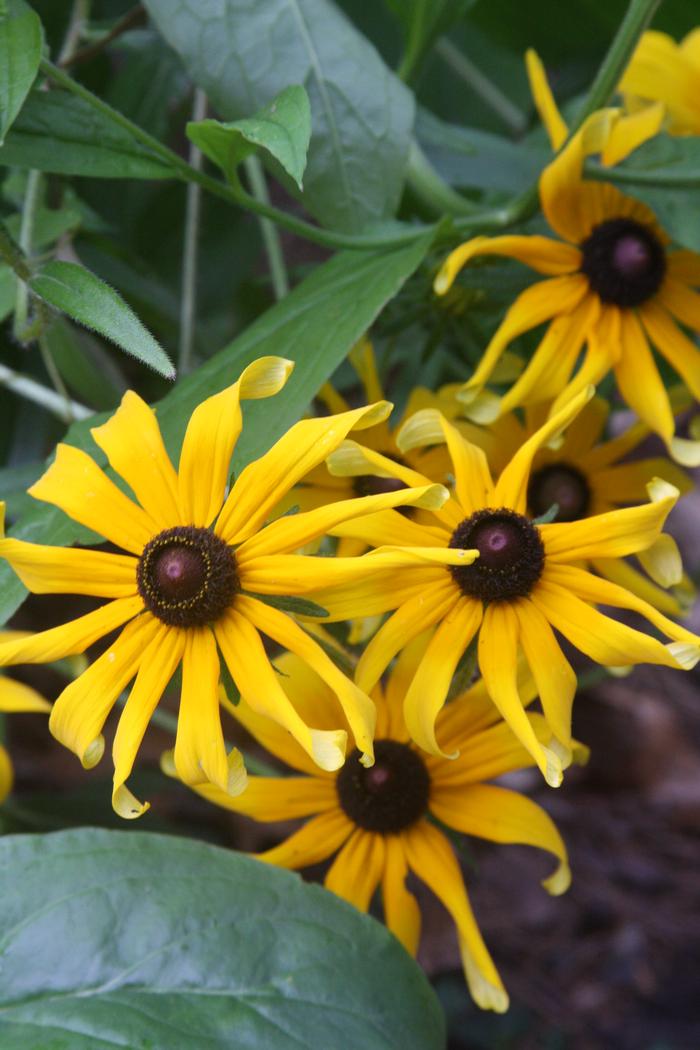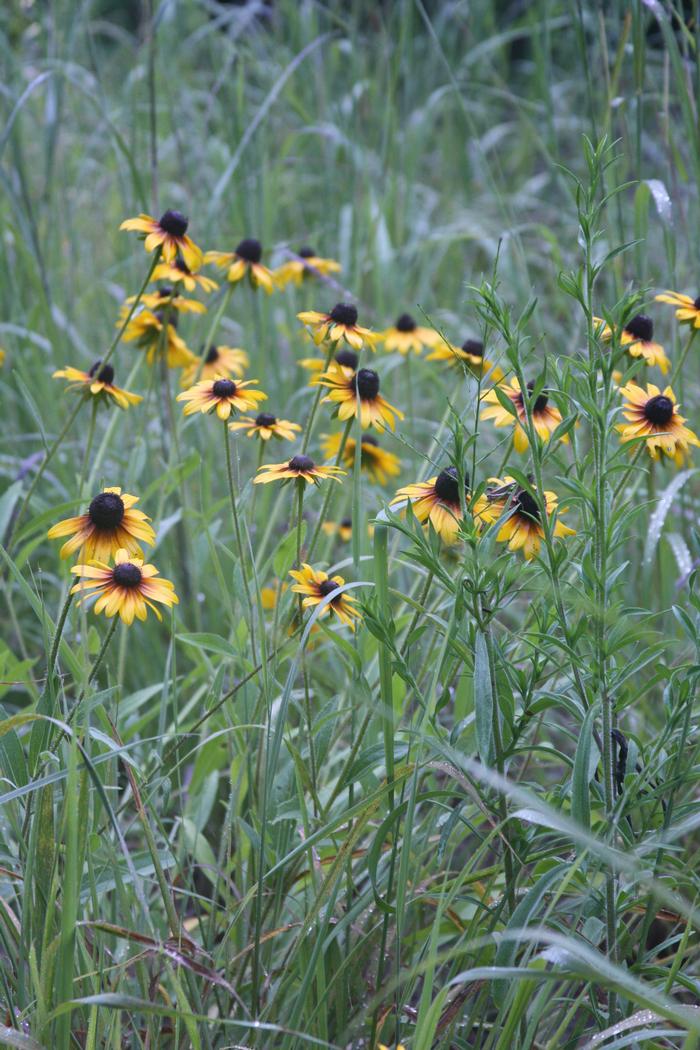General Description
Bloom Description: The classic, daisy-like blooms are typically 2 to 3 inches wide, and bloom for up to a month from July to August depending on the location. The central cone matures into a seed cluster that greatly appeals to birds.
Growth Habit & Shape: Rudbeckia hirta typically grows as a basal rosette in its first year, and then forms a 2-3' tall clump with an open branching habit in and leading up to its flowering stages.
Soil Preferences: Though this plant grows best in sandy, well-drained soils, it will tolerate somewhat heavier soil conditions, and even some clay. Grows well in a wide range of pH conditions.
Root Description: Taproot or cluster of fibrous roots; this is a mycorrhizal species.
Garden Uses: Meadow gardens, roadsides and highway margins, hellstrips, rain gardens, hillsides and other areas prone to erosion.
Best Management & Maintenance: With no interference, populations will dwindle over several years as longer lived perennials, trees, and shrubs establish. Burning or mowing in late winter or early spring reduces canopy establishment and enables persistence of vigorous colonies. If mowing, removal of thatch may be required.
Common Problems: Minor issues with powdery mildew or damping-off organisms, but seldom terminal. Typically disease-free.
Benefits
Ornamental Value: With bright, cheery, heavily contrasting flowers, this species brings color and many insect visitors to sunny gardens in late summer.
Wildlife Benefits: Provides cover and forage for several song and game bird species, and serves as a host plant for at least 15 species of lepidopterans, including the wavy-lined emerald and the silvery checkerspot. It is pollinated by bees and flies.
Other Practical/Environmental Benefits: Erosion control and soil stabilization, cover crop.
Use in place of: -
Ecology
Habitat:
disturbed habitats, roadsides, grasslands, meadows, and prairies.
Response to Disturbance: Black-eyed Susan is a pioneer species that thrives in open, sunny areas. Though it has been found to rapidly colonize available ground given the opportunity, it is typically out-competed by other, more aggressive species within several years. It reproduces asexually as well as sexually, regenerating from the root crown. This is considered a biennial species, as it typically produces many more flowers in its second year than in its first.
Native State Distributions:
Canada: AB, BC, MB, NB, NF, NS, ON, PE, QC, SK
USA: AL, AR, CA, CO, CT, DC, DE, FL, GA, IA, ID, IL, IN, KS, KY, LA, MA, MD, ME, MI, MN, MO, MS, MT, NC, ND, NE, NH, NJ, NM, NY, OH, OK, PA, RI, SC, SD, TN, TX, UT, VA, VT, WA, WI, WV, WY
Wetland indicator status: FACU
References
- USDA NRCS Plant Fact Sheet
- Walsh, Roberta A. 1994. Rudbeckia hirta. In: Fire Effects Information System, [Online]. U.S. Department of Agriculture, Forest Service, Rocky Mountain Research Station, Fire Sciences Laboratory (Producer).
- National Wildlife Federation Native Plants Finder
- NatureServe. 2020. NatureServe Explorer: An online encyclopedia of life [web application]. Version 7.2. NatureServe, Arlington, Virginia.
- Medve, R. (1984). The Mycorrhizae of Pioneer Species in Disturbed Ecosystems in Western Pennsylvania. American Journal of Botany, 71(6), 787-794.
- New Moon Nursery plant profile
- Anna Fialkoff, personal communication
Return to Top



